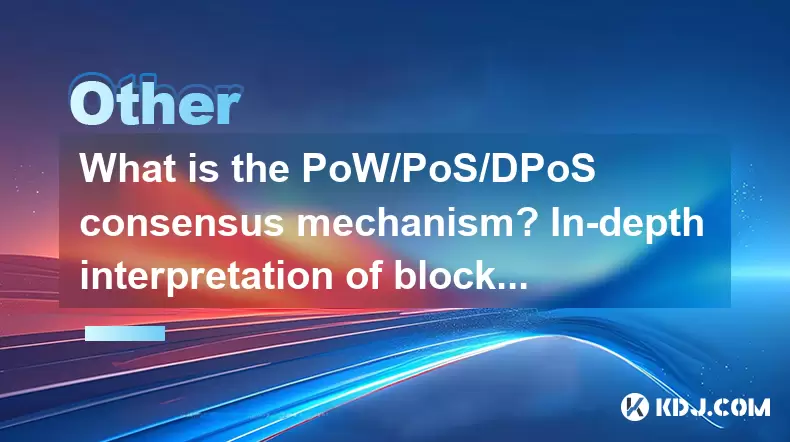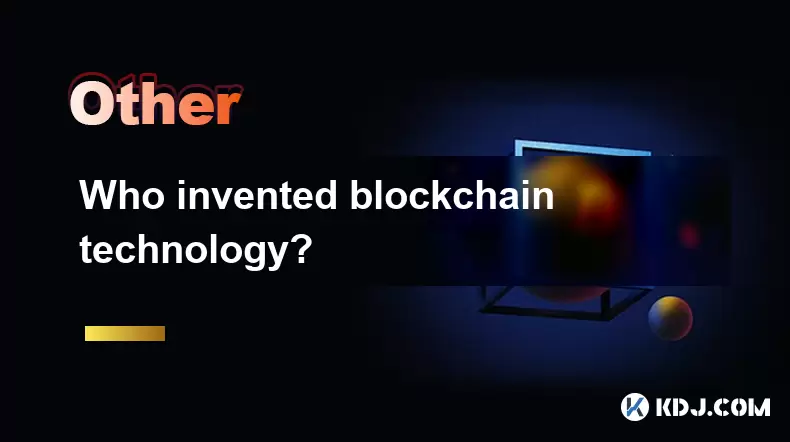-
 Bitcoin
Bitcoin $117500
-0.66% -
 Ethereum
Ethereum $3760
-1.24% -
 XRP
XRP $3.087
-2.54% -
 Tether USDt
Tether USDt $0.9999
-0.01% -
 BNB
BNB $803.6
-4.03% -
 Solana
Solana $180.3
-4.15% -
 USDC
USDC $0.9998
-0.01% -
 Dogecoin
Dogecoin $0.2218
-4.92% -
 TRON
TRON $0.3366
3.71% -
 Cardano
Cardano $0.7785
-3.73% -
 Hyperliquid
Hyperliquid $42.90
-4.75% -
 Sui
Sui $3.797
-7.45% -
 Stellar
Stellar $0.4165
-2.32% -
 Chainlink
Chainlink $17.65
-4.17% -
 Bitcoin Cash
Bitcoin Cash $561.0
-3.86% -
 Hedera
Hedera $0.2611
-4.54% -
 Avalanche
Avalanche $24.33
-7.02% -
 UNUS SED LEO
UNUS SED LEO $8.972
0.06% -
 Litecoin
Litecoin $107.6
-2.79% -
 Toncoin
Toncoin $3.254
-1.84% -
 Shiba Inu
Shiba Inu $0.00001306
-4.69% -
 Ethena USDe
Ethena USDe $1.001
0.00% -
 Uniswap
Uniswap $10.10
-4.83% -
 Polkadot
Polkadot $3.902
-4.63% -
 Monero
Monero $315.1
-2.57% -
 Dai
Dai $1.000
0.02% -
 Bitget Token
Bitget Token $4.499
-2.53% -
 Pepe
Pepe $0.00001145
-7.38% -
 Cronos
Cronos $0.1479
6.07% -
 Aave
Aave $281.3
-4.07%
What is the PoW/PoS/DPoS consensus mechanism? In-depth interpretation of blockchain core technology
PoW secures Bitcoin but consumes high energy; PoS, used in Ethereum 2.0, is eco-friendly but vulnerable to attacks; DPoS, in EOS and TRON, offers efficiency but may centralize control.
Jun 10, 2025 at 12:49 pm

In the realm of blockchain technology, consensus mechanisms play a crucial role in maintaining the integrity and security of the network. Three of the most prominent consensus mechanisms are Proof of Work (PoW), Proof of Stake (PoS), and Delegated Proof of Stake (DPoS). Each of these mechanisms has its unique approach to achieving consensus among network participants. This article will delve into an in-depth interpretation of these core technologies, exploring their functionalities, advantages, and potential drawbacks.
Proof of Work (PoW)
Proof of Work (PoW) is the original consensus mechanism used by Bitcoin and several other cryptocurrencies. PoW requires network participants, known as miners, to solve complex mathematical puzzles to validate transactions and add new blocks to the blockchain. This process, known as mining, involves significant computational power and energy consumption.
In PoW, miners compete to find a solution to the puzzle, and the first one to solve it gets to add a new block to the blockchain and is rewarded with newly minted cryptocurrency. The difficulty of the puzzles adjusts dynamically to maintain a consistent block time, ensuring that the network can handle varying levels of computational power.
One of the key advantages of PoW is its security. The energy and resources required to launch a 51% attack, where an attacker gains control of the majority of the network's mining power, are prohibitively high. However, this security comes at the cost of high energy consumption, which has led to concerns about the environmental impact of PoW-based cryptocurrencies.
Proof of Stake (PoS)
Proof of Stake (PoS) is an alternative consensus mechanism designed to address some of the drawbacks of PoW. In PoS, validators are chosen to create new blocks based on the number of coins they hold and are willing to "stake" as collateral. This approach eliminates the need for energy-intensive mining and instead relies on the economic incentives of participants to maintain the network's integrity.
In a PoS system, validators are selected through a deterministic algorithm, often involving a combination of factors such as the size of their stake and the duration for which they have held their coins. This selection process is typically more energy-efficient than PoW, as it does not require solving complex mathematical problems.
One of the primary advantages of PoS is its reduced energy consumption, making it a more environmentally friendly option compared to PoW. Additionally, PoS can be more inclusive, as it does not require specialized hardware, allowing more participants to contribute to the network's security. However, PoS systems can be vulnerable to certain types of attacks, such as the "nothing at stake" problem, where validators might be incentivized to validate multiple conflicting versions of the blockchain.
Delegated Proof of Stake (DPoS)
Delegated Proof of Stake (DPoS) is a variation of PoS that introduces a voting mechanism to select validators. In DPoS, token holders vote for a set number of delegates who are responsible for creating new blocks and maintaining the blockchain. This approach aims to combine the benefits of PoS with increased efficiency and scalability.
In a DPoS system, the number of delegates is typically fixed, and they take turns producing blocks in a round-robin fashion. This process is designed to be faster and more efficient than traditional PoS or PoW systems, as it reduces the number of participants involved in the consensus process.
One of the main advantages of DPoS is its potential for high transaction throughput and low latency, making it suitable for applications that require fast and efficient processing. However, the centralized nature of DPoS, where a small number of delegates control the network, can raise concerns about the potential for collusion or manipulation.
Comparative Analysis of PoW, PoS, and DPoS
When comparing PoW, PoS, and DPoS, it is essential to consider their respective strengths and weaknesses. PoW is known for its robust security but is criticized for its high energy consumption. PoS, on the other hand, offers a more energy-efficient alternative but may be susceptible to certain types of attacks. DPoS aims to balance efficiency and security but introduces a level of centralization that may not be desirable for all blockchain projects.
Each consensus mechanism has its unique set of trade-offs, and the choice of which to use depends on the specific requirements and goals of a blockchain project. For instance, a project focused on environmental sustainability might opt for PoS or DPoS, while a project prioritizing security might prefer PoW.
Implementation and Use Cases
The implementation of PoW, PoS, and DPoS varies across different blockchain projects, each tailored to meet specific needs and use cases. Bitcoin, for example, uses PoW to secure its network and maintain a decentralized ledger of transactions. Ethereum, on the other hand, is transitioning from PoW to PoS with its Ethereum 2.0 upgrade, aiming to improve scalability and reduce energy consumption.
DPoS is used by projects like EOS and TRON, which prioritize high transaction throughput and efficiency. These projects leverage the voting mechanism of DPoS to select delegates who are responsible for maintaining the network's integrity and processing transactions.
Each consensus mechanism has its unique set of use cases, and understanding these can help developers and users choose the most appropriate technology for their needs. For instance, PoW might be suitable for a cryptocurrency that requires high security and decentralization, while PoS could be ideal for a platform focused on sustainability and inclusivity. DPoS, with its emphasis on efficiency and scalability, might be the best choice for applications requiring fast transaction processing.
Technical Details and Challenges
Delving into the technical details of PoW, PoS, and DPoS reveals the complexities and challenges associated with each mechanism. PoW, for example, relies on cryptographic hash functions to create puzzles that miners must solve. The difficulty of these puzzles is adjusted through a process known as difficulty adjustment, which ensures that new blocks are added to the blockchain at a consistent rate.
PoS, on the other hand, uses algorithms such as the "randomized block selection" or "coin age" to determine which validator will create the next block. These algorithms must be carefully designed to prevent manipulation and ensure the security of the network. Challenges in PoS include the "nothing at stake" problem and the potential for centralization if a small number of participants hold a large portion of the staked coins.
DPoS introduces additional complexity with its voting mechanism, which requires a robust and secure system for token holders to cast their votes and select delegates. The challenge here lies in ensuring that the voting process is fair and resistant to manipulation, as well as maintaining the integrity of the selected delegates.
Frequently Asked Questions
Q: Can a blockchain use multiple consensus mechanisms simultaneously?
A: While it is technically possible to combine different consensus mechanisms within a single blockchain, it is not a common practice. Most blockchains stick to one primary consensus mechanism to maintain simplicity and security. However, some projects are exploring hybrid models that combine elements of different mechanisms to achieve specific goals.
Q: How does the choice of consensus mechanism affect the decentralization of a blockchain?
A: The choice of consensus mechanism can significantly impact the decentralization of a blockchain. PoW tends to be more decentralized, as it allows anyone with the necessary hardware to participate in mining. PoS can be more centralized if a small number of participants hold a large portion of the staked coins. DPoS, with its fixed number of delegates, can be the most centralized of the three, as the power to validate transactions is concentrated among a small group of elected individuals.
Q: What are the potential risks associated with each consensus mechanism?
A: Each consensus mechanism has its unique set of risks. PoW is vulnerable to 51% attacks, where an attacker gains control of the majority of the network's mining power. PoS faces risks such as the "nothing at stake" problem and potential centralization if a small number of participants hold a large portion of the staked coins. DPoS risks include the potential for collusion among delegates and the manipulation of the voting process.
Q: How do developers decide which consensus mechanism to use for their blockchain project?
A: Developers consider several factors when choosing a consensus mechanism, including the project's goals, the desired level of security, scalability requirements, and environmental considerations. For instance, a project focused on high security and decentralization might opt for PoW, while a project prioritizing scalability and energy efficiency might choose PoS or DPoS. The decision ultimately depends on balancing the trade-offs between different mechanisms to meet the project's specific needs.
Disclaimer:info@kdj.com
The information provided is not trading advice. kdj.com does not assume any responsibility for any investments made based on the information provided in this article. Cryptocurrencies are highly volatile and it is highly recommended that you invest with caution after thorough research!
If you believe that the content used on this website infringes your copyright, please contact us immediately (info@kdj.com) and we will delete it promptly.
- Bitcoin Price Drop: Navigating the Dip with Corporate Strategies
- 2025-07-30 07:30:12
- BNB's Bullish Cycle: ChatGPT Weighs In on the Future
- 2025-07-30 06:50:12
- XRP's Wild Ride: Open Interest, Price Crash Fears, and What's Next
- 2025-07-30 07:50:12
- SEC Greenlights In-Kind Creations: A Game Changer for Bitcoin ETPs?
- 2025-07-30 07:50:12
- Arbitrum (ARB) Price Prediction: Navigating the Ups and Downs of the Best ETH Eco
- 2025-07-30 06:50:12
- Ethereum, Ruvi AI, Presale: The Next Big Thing in Crypto?
- 2025-07-30 07:30:12
Related knowledge

How to start a business using blockchain?
Jul 28,2025 at 12:36am
Understanding the Basics of Blockchain TechnologyBefore diving into the process of starting a business using blockchain, it's crucial to understand wh...

What is a token on the blockchain?
Jul 21,2025 at 07:00am
Understanding the Concept of a TokenIn the realm of blockchain technology, a token is a digital representation of an asset or utility that exists on a...

Can blockchain be used for identity verification?
Jul 18,2025 at 02:14pm
Understanding Identity Verification in the Digital AgeIn the modern digital landscape, identity verification has become a critical component for ensur...

What is a consensus mechanism in blockchain?
Jul 21,2025 at 03:01am
Understanding the Basics of Consensus MechanismsA consensus mechanism is a critical component of any blockchain network. It refers to the process by w...

How to explain blockchain to someone with no tech background?
Jul 18,2025 at 11:08pm
Understanding the Basics of BlockchainTo explain blockchain to someone with no tech background, it's essential to start with simple analogies and avoi...

Who invented blockchain technology?
Jul 23,2025 at 01:28am
Origins of Blockchain TechnologyBlockchain technology did not emerge from a single inventor or institution. Instead, it evolved through a series of ac...

How to start a business using blockchain?
Jul 28,2025 at 12:36am
Understanding the Basics of Blockchain TechnologyBefore diving into the process of starting a business using blockchain, it's crucial to understand wh...

What is a token on the blockchain?
Jul 21,2025 at 07:00am
Understanding the Concept of a TokenIn the realm of blockchain technology, a token is a digital representation of an asset or utility that exists on a...

Can blockchain be used for identity verification?
Jul 18,2025 at 02:14pm
Understanding Identity Verification in the Digital AgeIn the modern digital landscape, identity verification has become a critical component for ensur...

What is a consensus mechanism in blockchain?
Jul 21,2025 at 03:01am
Understanding the Basics of Consensus MechanismsA consensus mechanism is a critical component of any blockchain network. It refers to the process by w...

How to explain blockchain to someone with no tech background?
Jul 18,2025 at 11:08pm
Understanding the Basics of BlockchainTo explain blockchain to someone with no tech background, it's essential to start with simple analogies and avoi...

Who invented blockchain technology?
Jul 23,2025 at 01:28am
Origins of Blockchain TechnologyBlockchain technology did not emerge from a single inventor or institution. Instead, it evolved through a series of ac...
See all articles

























































































